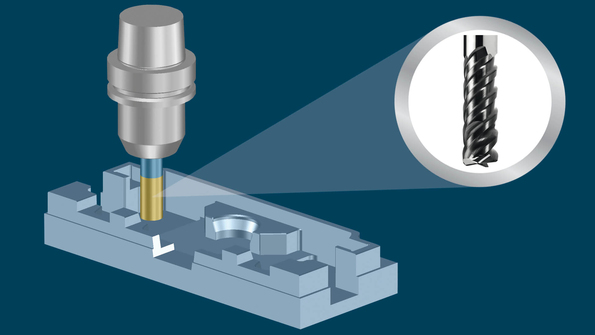-
Software
-
CAM software
- Tebis Automill
- CNC programming
- CNC automation
- CNC simulator
- Multiple setup
- Robotic machining
- CNC drilling
- Deep-hole drilling
- Combined turn-milling
- CNC turning
- Turn-milling
- 2.5D milling
- 3D milling
- 5-axis milling
- Slot milling
- Trimming
- HPC milling
- HFC milling
- Circle-segment cutters
- Sinker EDM
- Wire EDM
- 3D laser cutting
- Laser hardening
- Laser weld cladding
- CAD software
- CAQ software
- MES software
- Products
- Part stories
-
CAM software
- Services
- Consulting
- Sectors
- References
- Company
- News

-

High-efficiency roughing with HPC milling machines
High-performance cutting (HPC) for maximum material removal rate
The goal of every roughing operation is to remove as much material as possible within the shortest possible time. This is an enormous stress test for the cutter, which often ends up in full contact. Tebis therefore uses options for full-cut handling as well as for full-cut avoidance. In full-cut handling, feed rates are automatically reduced, or full-cut areas are machined trochoidally. In full-cut avoidance, the path layout is automatically adapted to the geometry without full cuts.
Full-cut avoidance is used in adaptive roughing. This is where it really counts: Compared with conventional roughing, special HPC cutters achieve extremely high material removal rates at constant cutting conditions with higher cutting speeds and feed rates, smaller lateral stepovers and very large cutting depths – and time savings of over 60 percent are easily possible. Adaptive roughing strategies for HPC milling are especially suitable for parts with many deep cavities. Hard materials can also be machined very easily in this way.
HPC milling with Tebis
Highly efficientFeed rates and paths are always optimized • Longer machine uptime • Lace cut machining is also possibleAn end-to-end systemBlank tracking across machining operationsProtects tool materialsLong tool lifeSuitable for 2.5 D, 3D and 5-axis machining operations
Adaptive trochoidal roughing strategies can be implemented in Tebis in 2.5D, 3D and 5-axis machining operations. The tool can be quickly repositioned, even at high feed rates. Integrated blank transfer enables a simple combination of all milling operations.
2.5D HPC roughing
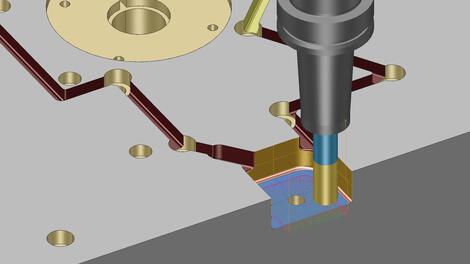
3D HPC roughing
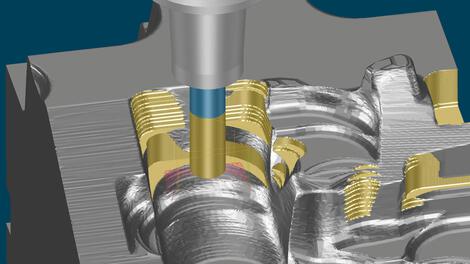
5-axis simultaneous HPC roughing
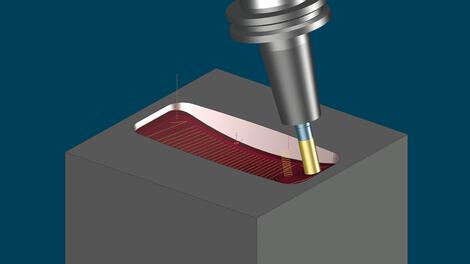
Integrated re-roughing for even better results
The additional "Re-roughing upwards" option enables remachining of residual stock areas with a smaller depth of cut from the bottom upwards with no difficulties.
Clear pocket adaptively or trochoidally in a single step...
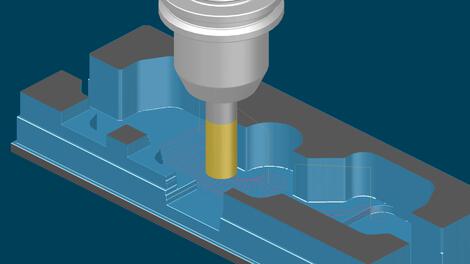
... Machine residual stock on the pocket walls...
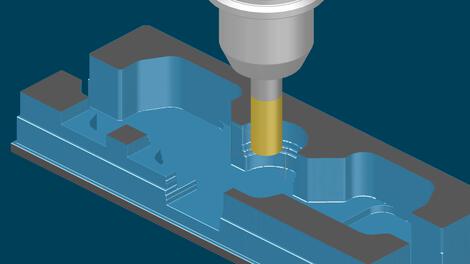
... from bottom to top.
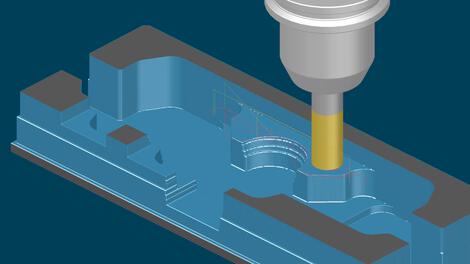
How it’s done! Practical test of run time calculation
Without a doubt: The adaptive roughing strategy is the one that achieves the highest material removal rate. In many cases it is also the most efficient strategy – but not always. Because how a part is best machined depends on the geometry, the material and the machine tool. Technology parameters such as cutting data and feed rates must exactly match the machining operation.
In our practical test, we compared different roughing strategies taking part geometry and the technology parameters into account. Results: The right combination is critical!

